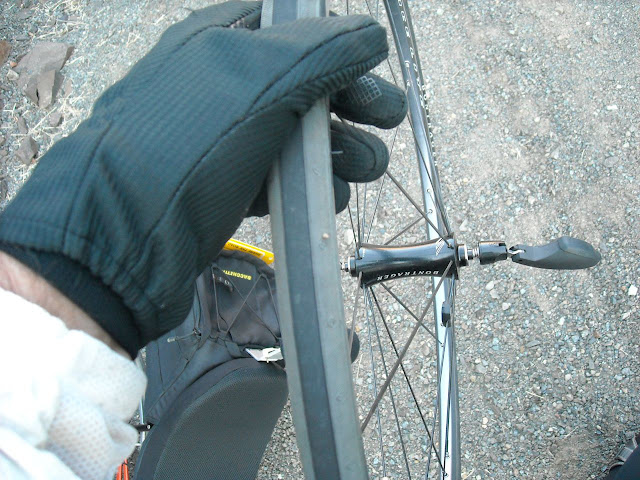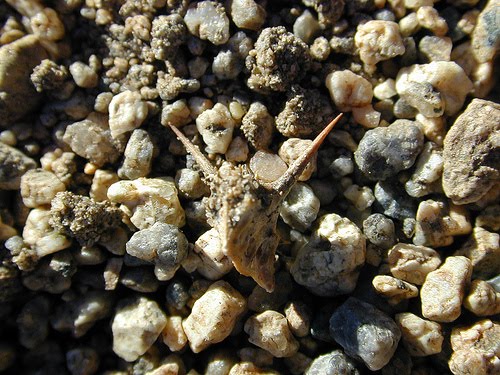I am asked every now and then if I like the recumbent trike better or if I prefer the recumbent bike. I guess the “real” and “safe” answer is, “It depends on the circumstances of the ride.” While this can be true, neither of my rides are race-worthy in terms of weight and I consider myself a recreational rider. Over the last handful of rides I am preferring the trike more and more for everything, even in the face of what many would call a trikes inherent disadvantages.
For my last handful of loop training rides I have done a bit of an experiment on myself. I have taken the same loop alternating between the trike and the highracer. Each time I have kept track of the riding conditions, my total time and average speed. I have also kept track of another important factor - how I felt overall during the ride and how I was treated in traffic.
First, some of the pros and cons are in order as I initially perceive them. On the recumbent bike, I would rate the cons for me as:
Cons:
Unnerving on steep climbs. (wobble factor)
Traffic passes closer to me. (still not as close as road bikers complain about though)
Pros:
Faster overall.
Hard to beat the jet pilot feel of downhill cornering on a recumbent bike.
A bit higher off the ground = better perception of safety.
Lighter weight. (about 10 pounds)
Comfortable and stiff power transfer.
Carries momentum better
For the trike, I would rate my initial cons and pros as follows:
Cons:
Much heavier overall than my recumbent bike.
Loses momentum much faster when hitting an uphill.
Climbs slower.
Some boom flex
Lower to the ground = perception of increased vulnerability.
Slower overall average speed.
Possibility of tipping at high speed.
Pros:
Climbs come very easily. (no balance needed)
More comfortable overall.
Go-cart feel on downhills due to low CG
So looking at my initial list - it would seem that the trike loses out overall. But actually the tike is a real winner. Many of the cons simply do not play out for me when I look at the real data from my rides. Granted, with more training and ride time as the season gets going, my attitude might change, and the “right tool for the job” rule still applies. But for an overall everyday steed for fitness, cruising, and organized rides it seems hard to beat a trike.
My average speed on the highracer has been 14.10 MPH in rolling terrain. On the trike, I expected my average to me much lower, but I found on the exact same loop under similar conditions it was a total of 13.14 MPH. That is less than 1 MPH slower on average. And since I am not racing for any sort of trophies here, that number is simply to small for me to care about.
The real shocker of this is that the “disadvantages” of the trike were less of a factor in reality. Despite the heavier weight of the trike, my total average speed was not that far off and the climbs did not seem any harder when riding them. Indeed, the climbs via a trike are more enjoyable than my highracer, as I have no worries about falling over or wobbling along with traffic approaching from behind. No matter how steep the grade gets, I can trike up the hill without wobbling. I can easily keep an eye on who and what is behind me in my rear view mirrors. Should the grade get too steep I can simply pull off the side of the road and rest. No unclipping. No “arte-Johnson's” to worry about.
Climbs on the recumbent bike get much hairier and more unnerving the steeper it gets. I have had my share of stalls and falls climbing on a 2 wheeled ‘bent when trying to tackle really steep grades. The steepest climbs on a trike are only limited by gearing and wheel traction. Adding traffic to the mix only makes it worse on a 2 wheeler and even more of my energy gets expended being nervous.
I noted above the “perceived” safety of the two rides. I have many years on my 2 wheeled ‘bents and feel quite comfortable on them in most situations including traffic. Immediately when seeing a trike, one thinks it has to be more dangerous on the road since it is so low to the ground. I admit to sweating bullets on my first trike ventures into traffic. I have since found that the myth of “that can’t be safe on the road” is just not true for trikes. I would go further to say that I actually feel safer in traffic on the trike.
It is common for road bikers to complain about getting “buzzed” by traffic with not much elbow room. It is less common on a recumbent bike - people in their cars typically give a wider zone when passing a recumbent bike. On the trike, it is not uncommon for people to give me and entire lane width when they pass. Now, if some tool driver is not going to see you - they are not going to see you no matter what bike you are on or how far off the ground you are. You are toast in such a case.
When riding, I do not try to take up more road space when on one bike than another. I might actually take up a bit more road space when on the recumbent bike - as I don’t want to get forced off the edge of the asphalt and have a spill. On the tike I can hug the line or even ride with my right wheel over a bit. Should I need to bail off the road I can do so safely on the trike. The total width of the trike is less than 4 inches wider than the width of me sitting on the highracer, so the width is a perception and not a real difference. I imagine the perceived width is more by the car driver. I feel this is true since people give more room to the trike simply because they think it’s wider AND because it’s so low to the ground.
Think of this - when you are approaching something in your car, and you can gauge the distance of that object from your rearview mirror, you feel more comfortable getting closer to it. This is the problem road bikers face - their profile is the perfect height to allow a driver to play a “how close can I get” game, since the driver can easily gauge the distance from their passenger side mirror or hood from the biker. This is true even when the car is moving at a good speed. On a recumbent bike that game is not so easy. The unfamiliar shape and profile makes playing the distance game harder, and as a car approaches the profile of a recumbent starts to disappear below the level of the cars mirror or even the hood on a taller vehicle. To compensate a driver will drift out to keep the biker in view or slow down significantly.
Now on a trike, it is near impossible to gauge the distance effectively. The profile of a trike disappears quickly from view of the driver. To keep a trike rider in view a driver must sweep WAY out and go around. Thus, on roads where I do not have a dedicated lane I get huge space on the trike. Add to the fact that some drivers may think you are handicapped and not some “elitist cyclist” and you get lots of space. No car driver wants to hit a poor handicapped person. Elite roadies seem to be fair meat for some drivers though. But I honestly believe that 99.9% of drivers are NOT interested in killing someone with their vehicles - however - when you allow a driver to easily gauge their distance from you they will often try to squeeze by even if it is unsafe.
So, for me, the trike is winning the contest so far. Comfortable. No balance. Full concentration going to power to the pedals and surroundings. Cars pass with wide margins. Kids point and wave. I will keep tabs through the season. The performance of the trike has been very good to my surprise. I am not astronomically faster on the highracer, even with a 10 pound weight difference between the bikes. I imagine if I were on a super light recumbent I would feel differently, but that is not my case. In the meantime I know that over time I will only get faster on both sets of wheels as the season progresses and be able to complete my rides with relatively comparable times.
Ride on!




















